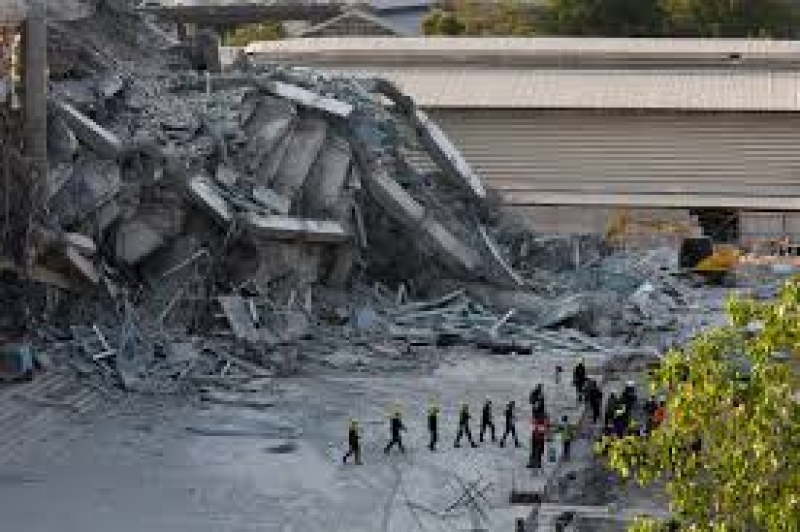- US Issues Travel Alert for Bangladesh Ahead of Election |
- Air ambulance carrying bullet-hit Hadi flies for Singapore |
- Can Dhaka’s arms recovery drive ensure peaceful polls? |
- ‘Unhealthy’ air quality recorded in Dhaka Monday morning |
- BD peacekeepers' deaths: UN chief calls Dr. Yunus, offers condolence |
Myanmar quake toll passes 1,600 as rescuers dig for survivors

The death toll from the devastating earthquake that struck Myanmar on Friday has now risen to over 1600, with 1,670 people reported injured, according to the country’s ruling junta. The massive 7.7-magnitude quake, which hit at a shallow depth, sent shockwaves through large parts of central Myanmar, particularly affecting the region northwest of Sagaing, a city in the heart of the country.
The quake, which occurred in the early hours of Friday morning, caused widespread destruction, toppling buildings, damaging roads, and disrupting essential services. Authorities have been working around the clock to assess the damage, while rescue teams are struggling to reach the hardest-hit areas, especially those in remote locations where infrastructure has been severely affected. As of now, the search for survivors continues, but authorities fear that the death toll could climb even higher as recovery operations progress.
Myanmar’s health services have been overwhelmed by the sheer number of injuries, with hospitals in affected areas rapidly reaching capacity. Local healthcare professionals, alongside international aid organizations, are making urgent efforts to provide medical treatment to the injured, many of whom are suffering from broken bones, head injuries, and severe trauma from the collapsed structures. The government has issued a call for international assistance, urging for resources, including medical supplies, search and rescue teams, and emergency relief funds.
The quake, one of the strongest to hit Myanmar in recent years, has also triggered landslides in several mountainous areas, further complicating rescue operations. In addition to the human toll, the quake has caused significant damage to infrastructure, including power lines, communication networks, and transport routes. With many villages cut off from the rest of the country, the scope of the disaster is still unfolding, and many areas remain without access to basic necessities like clean water, food, and medical supplies.
The international community has expressed deep concern over the situation in Myanmar, with several countries offering their support and expressing solidarity with the people affected by the disaster. United Nations officials have called for an immediate humanitarian response, highlighting the need for urgent assistance to help alleviate the suffering of those affected by the earthquake.
In the wake of the disaster, Myanmar’s military-led government, which has faced international criticism for its handling of political unrest in the country, has faced additional scrutiny for its emergency response efforts. The junta has vowed to continue mobilizing resources to assist affected communities but has acknowledged the significant challenges posed by the scale of the disaster.
The full extent of the damage and the exact number of casualties may take days to fully assess as search and rescue efforts continue. As Myanmar grapples with this natural disaster, the nation is left to mourn the lives lost and begin the arduous process of rebuilding in the aftermath of this catastrophic event.

